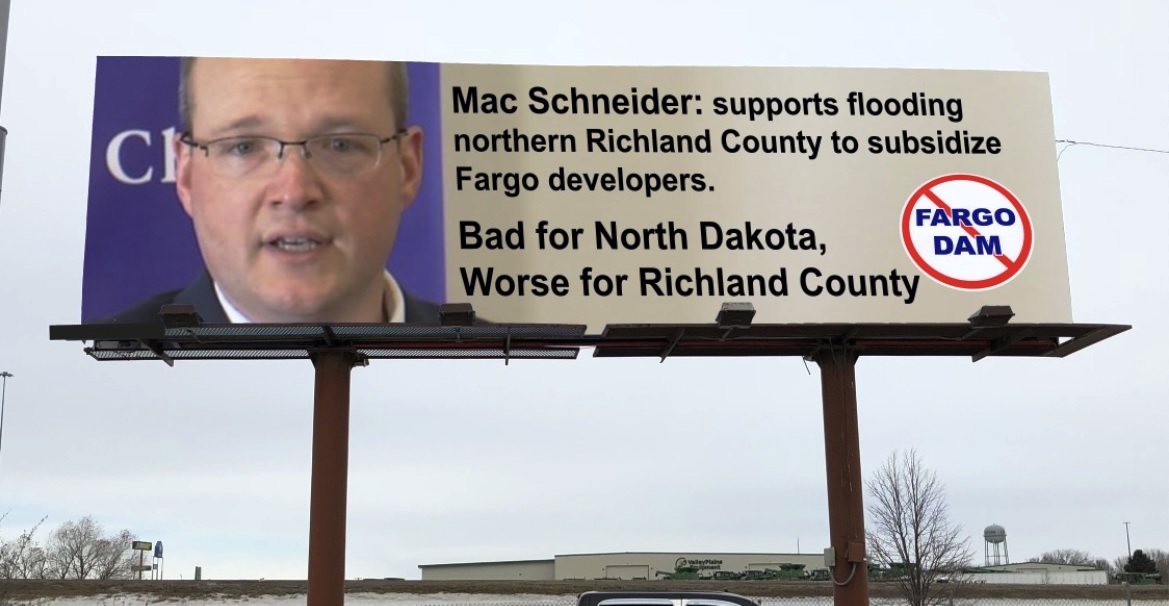
Richland-Wilkin Joint Powers Authority
Original Publication Date: May 10th, 2012
Republished with persmission from: Wahpeton Daily News
The Fargo-Moorhead Diversion is a big city urban growth plan that sprawls at the expense of rural North Dakota. The dam and reservoir required by the plan will cover more than 50,000 acres of farmland and communities with water, extending well into Richland and Wilkin Counties. Oddly enough, the southern edge of the diversion follows the boundary between the Fargo School District and Kindred School District.
How did it come to this? How did a diversion plan designed by the United States Army Corps of Engineers that had no dams and only took 30 square miles out of the flood plain, mushroom into a behemoth that places walls and a moat around more than 80 square miles?
Fargo’s current diversion proposal steals from our existing farms, cities and communities in southern Clay, Cass, and northern Richland and Wilkin counties. This amounts to, in the words of a Fargo engineer, a one-for-one land swap. Fargo gets about one acre of land for every acre they put under the dam and reservoir. Unfortunately, those who would be under water have no say in the matter.
In a recent meeting with the U.S. Army Corps, a Wilkin County Commissioner asked, “What if the residents of our counties don’t want to give up their property?” The response was that this is a federal project, and the land would be acquired under the federal process. In other words, Fargo does not care whether or not Wilkin and Richland counties agree. A diversion moves water around town that would otherwise be stored in the natural flood plain. The more land you take out of the floodplain, the more water that has to be diverted and the greater the impacts.
When Fargo-Moorhead decided to move the project from Minnesota to North Dakota, they chose to almost triple the area removed from the floodplain: 30 square miles vs. 80 square miles. That means more water has to be pushed around town. Rather than pay downstream landowners for the resulting damages, Fargo elected a cheaper alternative: build dams and hold the water upstream. Flooding rural North Dakota is not necessary to protect Fargo and Moorhead from the Red River.
The diversion can be smaller and built north of the Wild Rice River, near to where the original Minnesota plan was designed. The floodplain footprint would be far less and, combined with basin-wide retention, could wholly eliminate the need to build dams. This is North Dakota and Minnesota. It is not New York. We need not allow Fargo’s urban greed devour our way of life. Our forefathers chose to settle here. We choose to live here. Fargo should not be allowed to dictate whether we stay.
Views: 63
